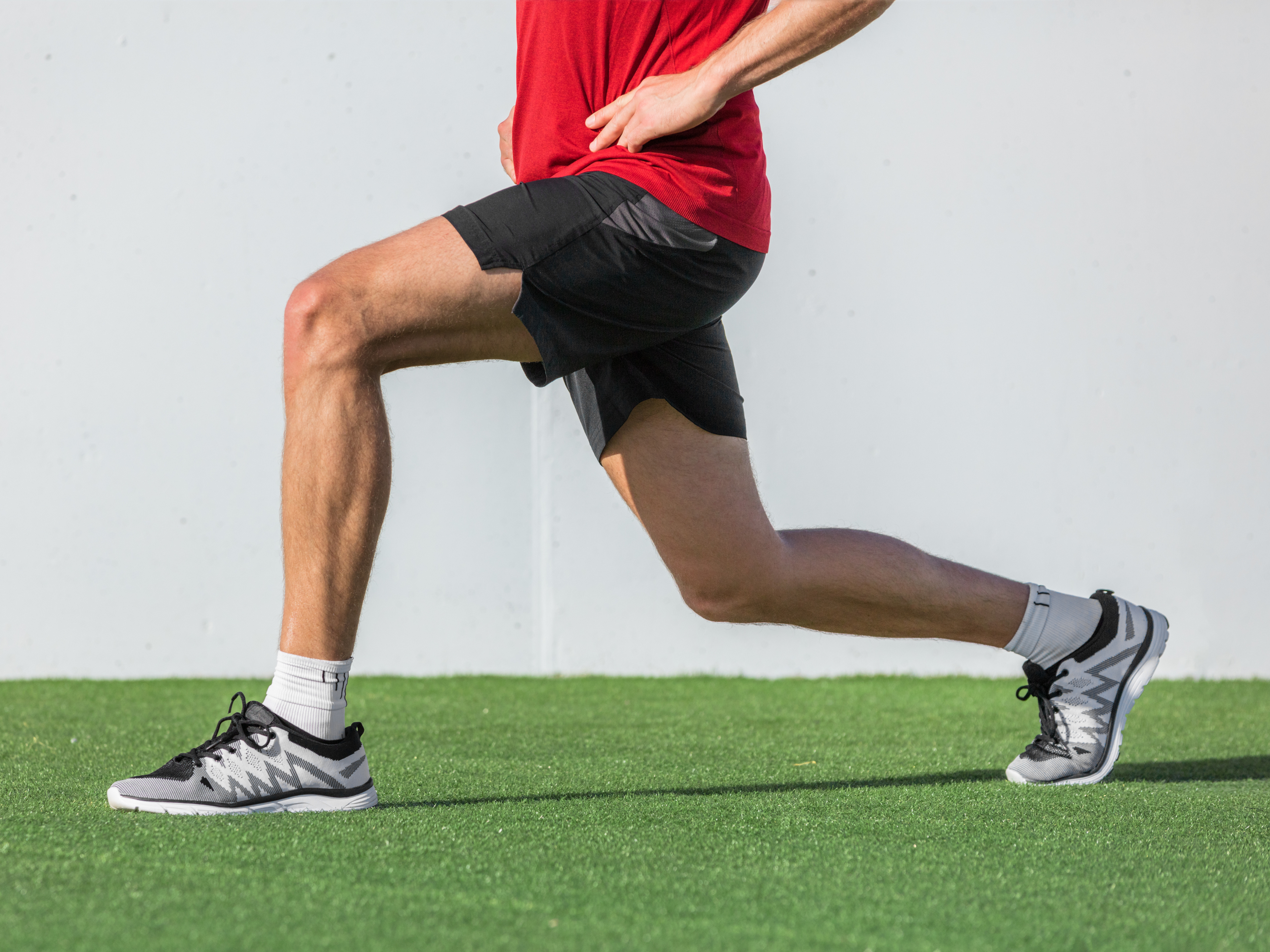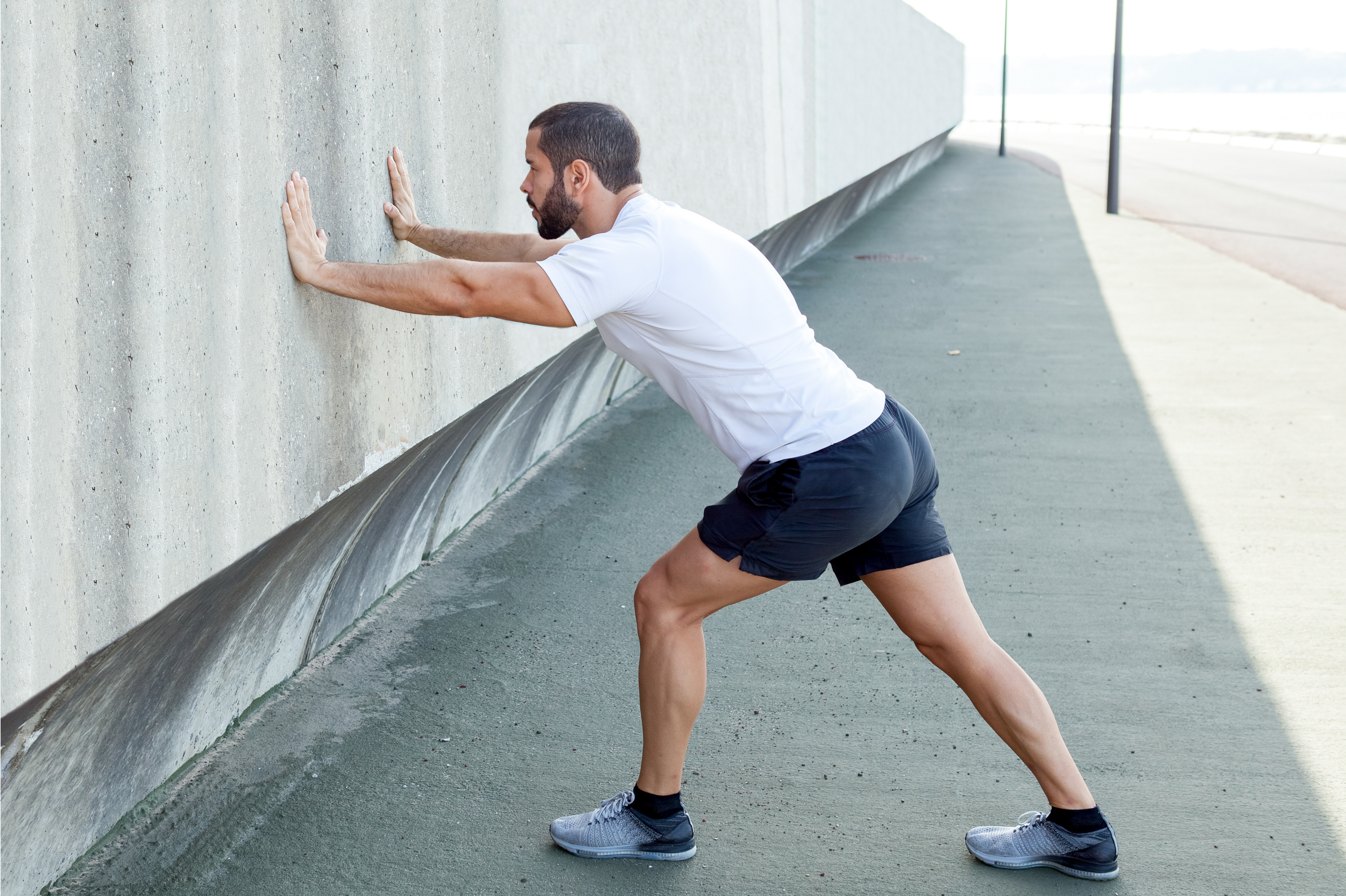Master the forward lunge: Proper form, variations, and common mistakes
As a runner, you likely already know that it is essential to strengthen your lower body for improved performance and preventing injuries. One effective exercise to achieve this is the forward lunge.
Which muscles does a lunge work?
Studies show that lunges primarily target the:
- Glutes (buttock muscles)
- Quadriceps (front thigh muscles)
- And hamstrings (back thigh muscles)
However, they also work the:
- Calf muscles
- Hip flexors
- And lower back
The degree of activation in each muscle group depends on the type of forward lunge and foot placement used.
How to move through your forward lunge
This video demonstrates proper lunge form.
Essential body parts to focus on during a forward lunge
These are the most important areas to focus on when starting out with lunges.
Feet
Front foot: Start by standing with your feet hip-width apart. When you step forward into the lunge, ensure your front foot is planted firmly on the ground, and your heel is down.
Back foot: Your back foot should be up on its toes with the heel lifted off the ground. This position allows you to maintain balance and stability throughout the exercise.
Knees
Front knee: As you step forward into the lunge, focus on maintaining proper knee position. Your front knee should be directly above your ankle, and your thigh should be parallel to the ground. If you already have knee pain, ensure your knee does not extend past your toes, as this can strain the knee joint unnecessarily.
Back knee: Your back knee should hover just above the ground, with your shin perpendicular to the floor.
Pelvis and core
Your pelvis should be in a neutral position throughout the lunge. Avoid tilting it forward or backward, or dropping one side, as this can lead to lower back pain and decreased effectiveness of the exercise. Instead, keep your core engaged and your pelvis level to maintain proper form.
Torso
Your torso should be upright, with your shoulders back and down. Avoid leaning too far forward, as this can put extra strain on your lower back. Keeping your torso upright will help you maintain good balance and stability throughout the exercise.
Common mistakes with forward lunges
By avoiding these mistakes, you can optimize your gains and avoid getting injured while lunging.
Top 4 forward lunge mistakes
1 - Leaning too far forward
Leaning too far forward can put extra strain on your lower back and decrease the effectiveness of the exercise.
Why this happens
This common mistake often happens when someone tries to step too far forward or needs to engage their core muscles more.
How to fix this
- Focus on keeping your torso upright throughout the entire movement.
- Engage your core muscles to maintain stability.
- Avoid stepping too far forward.
2 - Allowing your front knee to turn inward
Allowing your front knee to turn inward can put extra stress on your knee joint and ligaments.
Why this happens
This mistake often happens when someone tries to step too far forward or has weak hip muscles.
How to fix this
- Focus on keeping your front knee in line with your toes throughout the entire movement.
- Engage your hip muscles to maintain proper alignment and avoid letting your knee roll inward.
3 - Rounding your shoulders or back
Rounding your shoulders or back can put unnecessary strain on your lower back.
Why this happens
This mistake often happens when someone needs to engage their core muscles more or tries to lunge too profoundly.
How to fix this
- Focus on keeping your torso upright and engaging your core muscles throughout the entire movement.
- Avoid letting your shoulders round forward or your back arch excessively.
- Keep your gaze forward and your chest lifted.
4 - Pushing off your back foot
Pushing off your back foot can decrease the effectiveness of the exercise and increase your risk of injury.
Why this happens
This mistake often happens when you need to engage your front leg more or try to use momentum to get out of the lunge position again.
How to fix this
- Focus on using your front leg to power the movement when you push out of the lunge position.
- Keep your weight on your front foot.
How to regress your lunge (make it easier)
If you're just starting out with lunges, it might be too challenging to perform a forward lunge while maintaining good form and avoiding the above mentioned mistakes. A simpler form of the lunge (also known as a regression) might be helpful.
To regress the forward lunge, try doing these variations instead:
Assisted lunge
An assisted lunge is a variation of a lunge exercise that uses external support to help you perform the exercise with proper form. Common options for support include placing a hand on a chair or a wall beside you or holding a TRX suspension band or a resistance band suspended from above.
Assisted lunges benefit beginners or anyone struggling with balance, stability, or flexibility. The external support provided by the TRX or resistance band helps take some of the load off your muscles and joints, allowing you to focus on proper form and technique. In addition, holding onto a wall can provide stability throughout the movement.
Half lunge
When performing a half lunge, you stop and reverse the downward movement well before your front knee reaches a 90-degree angle.
A half lunge is an excellent exercise for beginners, anyone with mobility issues (tight muscles or joints), or if you are recovering from an injury. It allows you to work the same muscle groups as a full lunge while requiring less range of motion.
How to progress your forward lunge (make it harder)
There are several progressions of a forward lunge that you can do to increase the difficulty and challenge your muscles in different ways. Here are some progressions you can try.
Walking lunge
Perform a series of lunges by stepping forward with one leg and immediately bringing the back leg forward to step into another lunge. Continue walking forward in this way, alternating legs.
Front foot elevated lunge
Place your front foot on a bench or box to increase the range of motion you move through and add an extra challenge to the exercise.
Weighted lunge
Hold weights, such as dumbbells or a barbell, to add resistance to the exercise.
Jump lunge
Begin in the lunge position and then jump into the air, switching the position of your legs so that you land in a lunge with your opposite leg in front. This is a plyometric exercise that increases power and explosiveness.
Remember to maintain proper form and technique with each progression to avoid mistakes and injury and maximize the exercise's benefits. Start with a progression that challenges you but is still doable with good form, and gradually increase the difficulty as you become stronger and more comfortable with theexercise.
Check out the strength training workouts in the Exakt app if you want more guidance. All the exercises have clear video and text instructions, and the App uses your feedback after workouts to progress your exercises at the correct time.


